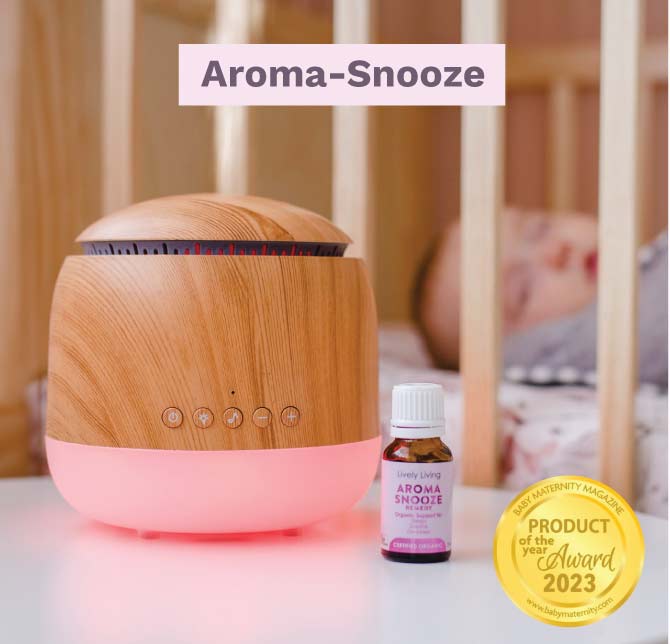Guide to Healthy Sleep Habits for Toddlers and Kids
Are you tired? If you are a parent of a toddler or young child who struggles with sleep, that feeling is likely familiar. Many parents find establishing healthy sleep habits for toddlers and young children a significant challenge. You dream of peaceful bedtimes and nights where everyone in the house gets the rest they need, and it is completely possible.
Getting good sleep is crucial for your little one's growth, mood, and overall development. More rest will make a world of difference for you too. Understanding your child's sleep needs and putting consistent, gentle strategies into place can transform your evenings and nights, helping everyone in the family thrive and fostering good family health. Successfully establishing healthy sleep habits for toddlers and young children can feel like a big hurdle, but with some guidance, it is achievable.
Table Of Contents:
- Understanding Your Little One's Sleep Needs
- Key Steps for Establishing Healthy Sleep Habits for Toddlers and Young Children
- Naps: The Essential Daytime Recharge
- Common Mistakes (and How to Side-Step Them)
- When Should You Ask for More Help?
- Conclusion
Understanding Your Little One's Sleep Needs
Sleep is when so much important development happens for our kids. It is when their brains process the day, their bodies grow, and their immune systems recharge. Without enough good quality sleep, toddlers and young children can be more irritable, have trouble concentrating, exhibit mood swings, and might even experience delays in development, as pediatric experts point out. Sufficient sleep profoundly impacts almost every part of their young lives, affecting their physical health and mental health.
Adequate rest supports healthy brain function, emotional regulation, and overall child health. Sleep problems can affect a child's physical well-being and contribute to challenges in early childhood development. Establishing healthy sleep patterns from an early age contributes positively to a child's health in the long term.
But how much sleep do they actually need? The amount can vary depending on the child, but here is a general idea for good quality sleep.
| Age Group | Total Sleep (in 24 hours) |
|---|---|
| Toddlers (1-2 years) | 11-14 hours (including naps) |
| Preschoolers (3-5 years) | 10-13 hours (including naps, if still taking them) |
Keep in mind these are averages; your child might need a little more or a little less. Common sleep challenges, or sleep concerns, often pop up, like resisting bedtime, waking up during the night, or fighting naps. These are normal parts of growing up, but they can be tiring for everyone and impact the quest for a good night's sleep.
Key Steps for Establishing Healthy Sleep Habits for Toddlers and Young Children
So, how do you actually build these good sleep patterns? It is not about a quick fix, but more about creating a consistent and comforting approach to help your child feel secure. You can make a big difference by focusing on a few key areas to establish healthy sleep habits.
Create a Calm and Consistent Bedtime Routine
Children thrive on predictability, and a consistent bedtime routine signals to their brains and bodies that it is time to wind down and prepare for sleep. This routine does not need to be long or complicated; 20-30 minutes is usually plenty for a positive bedtime experience. This predictability helps a child feel safe and understand what is coming next, reducing anxiety around bed time.
What could this positive bedtime routine look like? Think about a sequence of calming, quiet activities. Maybe it is a warm bath, followed by putting on pajamas, brushing teeth, and then reading a couple of favorite books. Soft lullabies or quiet talk can also be wonderful, helping children relax.
The main thing is to keep the atmosphere calm and loving. Most importantly, make sure it is screen-free for at least an hour before bed to effectively limit screen time. Those blue lights from tablets and phones can significantly interfere with melatonin production, the hormone that helps us achieve a good night's sleep. Helping children wind down properly is fundamental for good sleep hygiene.
Optimize the Sleep Environment
Where your child sleeps matters a lot for their child sleep. Think of their bedroom, or child's room, as a cozy cave, perfect for slumber. It should be dark, quiet, and cool, as a comfortable temperature is conducive to sleep.
Blackout curtains can be a game-changer, especially during summer months or for daytime naps, by minimizing light noise. A comfortable mattress and appropriate bedding are also important for quality sleep. Some children sleep better with a white noise machine, which can help drown out other household sounds or sudden noises, though ensure it's not too loud or close. A very dim night light can be used if your child feels more secure with it, but avoid bright lights.
Always prioritize safety in their sleep space, following safe sleep guidelines for cribs and beds. Ensure there are no loose blankets or unsafe toys in a crib for younger toddlers. This focus on the sleep environment contributes to healthy sleep patterns.
Daytime Habits Affect Nighttime Sleep
What happens during the day can greatly impact how well your child sleeps at night. Lots of physical activity and fresh air can help them burn off energy and feel more tired by bedtime; encourage activities that get them moving. Getting some natural light, especially in the morning, also helps regulate their internal body clock, which is crucial for a consistent sleep schedule.
Consistent nap schedules, including naps as needed, are important too, particularly for toddlers, supporting regular sleep. Dropping naps too soon can lead to an overtired child who actually has a harder time falling asleep and staying asleep at night. A well-structured day with varied daily activities can make a big difference to children sleep.
Also, pay attention to their diet. Avoid large meals or sugary snacks too close to bedtime as these can interfere with sleep. A small, healthy snack if they are hungry is usually fine, but avoid stimulants like chocolate or caffeine sometimes found in surprising places.
Guiding Towards Independent Sleep
One of the goals for many families is helping their child learn to fall asleep on their own. This means putting them into their crib or toddler bed when they are drowsy but still awake. It allows them to associate their bed with falling asleep, rather than needing you to rock, feed, or pat them to sleep, fostering independent sleep skills from an early age.
If your child resists their toddler bedtime or calls out for you after you have left the room, it can be challenging. There are different gentle approaches you can try, like gradually moving your chair further from their bed each night, or doing brief, reassuring check-ins. The important thing is to be consistent with whatever method you choose so the child feels your steady presence and support.
Handling night wakings with the same calm, consistent approach will also help them learn to resettle themselves. This consistency is part of establishing healthy sleep. Remember, the goal is to help your child feel capable of managing sleep on their own.
Dealing with Common Sleep Stealers
Sometimes, specific sleep problems pop up. It is good to know the difference between nightmares (scary dreams they often remember and need comfort for) and night terrors (where they might scream or thrash but are not fully awake and will not remember it). Night terrors can be frightening for parents, but the child usually has no recollection; ensuring they are safe during an episode is the priority.
Separation anxiety can also peak around bedtime, making it hard for them to let you go. Offering lots of reassurance during the day and maintaining a consistent, loving bedtime routine can help them feel more secure. If early morning waking is a frequent complaint, it is often linked to a bedtime that is too late (consider making bedtime earlier), or too much light coming into the room.
Transitioning from a crib to a toddler bed is a big step that can also temporarily disrupt sleep patterns. Try to time this transition when there are not other big changes happening in your child's life. Addressing these common sleep concerns proactively can lead to a better night's sleep for everyone.
The Power of Patience and Consistency
Remember, building good sleep habits takes time and a whole lot of patience. There will be good nights and not-so-good nights, impacting your child's sleep. Progress is not always linear, and that is okay; setbacks are a normal part of helping children learn.
Things like illness, travel, or even a developmental leap can cause temporary setbacks to your child's sleep schedule. Try not to get discouraged by these sleep problems. Stick to your established healthy sleep routines as much as possible, and get back on track as soon as things settle down. You are doing a great job, even when it feels hard, to establish healthy sleep habits.
Naps: The Essential Daytime Recharge
Naps are super important for toddlers and many preschoolers, playing a key role in their overall sleep. They help prevent your child from becoming overtired, which can surprisingly lead to more difficulty falling asleep at night and more night wakings. A well-rested child generally exhibits better brain function, has fewer mood swings, and is a better sleeper overall.
Toddlers (1-2 years old) usually need one or two naps a day, totaling about 1-3 hours of daytime sleep. By ages 3 to 5, many children start to shorten or even drop their naps, although some will continue to benefit from quiet activities or a rest time in the afternoon. The environment for naps should be similar to nighttime—quiet and dark if possible—though some kids can nap well in brighter, slightly noisier conditions. Just try to be consistent with nap times and routines to support their sleep schedule.
When is it time to drop a nap? Signs include consistently taking a very long time to fall asleep for the nap, or a nap that pushes bedtime much too late, affecting their night's sleep. You can transition by shortening the nap gradually or replacing it with a period of quiet activities. This is a process, so be flexible and observe your child's cues for toddler sleep needs.
Common Mistakes (and How to Side-Step Them)
It is easy to fall into a few common traps when you are exhausted and just want everyone to achieve good sleep. One of the biggest is inconsistency in sleep routines. If the rules change from night to night, your child will get confused and likely push boundaries more, making it harder to establish consistent sleep.
Over-reliance on what we call 'sleep props' is another one. This means your child needs something specific to fall asleep—like being rocked, fed, or having you lie down with them until they are fully out. While these can feel like quick fixes, they can lead to frequent wake-ups if that prop is not there when they stir during the night. The goal is to improve sleep hygiene by helping them learn to fall asleep without these external aids.
Lots of screen time right before bed, as mentioned earlier, is a well-known sleep disrupter due to the blue light; it's important to limit screen exposure. And lastly, giving in to frequent demands after you have said goodnight (for one more story, one more drink, one more hug) can prolong toddler bedtime indefinitely. Try to anticipate their needs as part of the consistent bedtime routine, and then be firm but loving about bedtime being over to support healthy sleep habits.
When Should You Ask for More Help?
Sometimes, despite your best efforts, sleep problems persist and start to really affect your child's well-being, their physical health, and your whole family's quality of life. If sleep issues are causing significant stress, or if your child seems excessively sleepy during the day, snores loudly, has difficulty breathing during sleep, experiences issues like persistent abdominal pain that might be related, or if you just feel like something is not right with their child health, it is time to talk to a health professional. These are valid sleep concerns that warrant professional health advice.
Your child's pediatrician or a health care provider is always a good first stop. They can rule out any underlying medical conditions like sleep apnea, severe reflux, or allergies that might be interfering with sleep and impacting your child's health. They can also offer sleep tips, provide or direct you to a helpful fact sheet or several fact sheets on child sleep, or, if needed, refer you to a child sleep consultant or a specialist for more targeted help with sleep concerns.
Remember, you do not have to go through this alone if things feel overwhelming. Seeking professional health advice is a proactive step towards ensuring your child gets the quality sleep they need for optimal development. Sometimes, professional guidance can make all the difference in establishing healthy sleep patterns for your child from an early age.
Conclusion
Helping your little one get good rest is one of the most valuable gifts you can give them, significantly impacting their child health and development. The process of establishing healthy sleep habits for toddlers and young children is a journey, often with a few bumps along the way, but the rewards of consistent sleep are immense. With consistency, patience, and a loving approach to sleep routines, you can guide your child towards peaceful nights and happy, well-rested days.




















